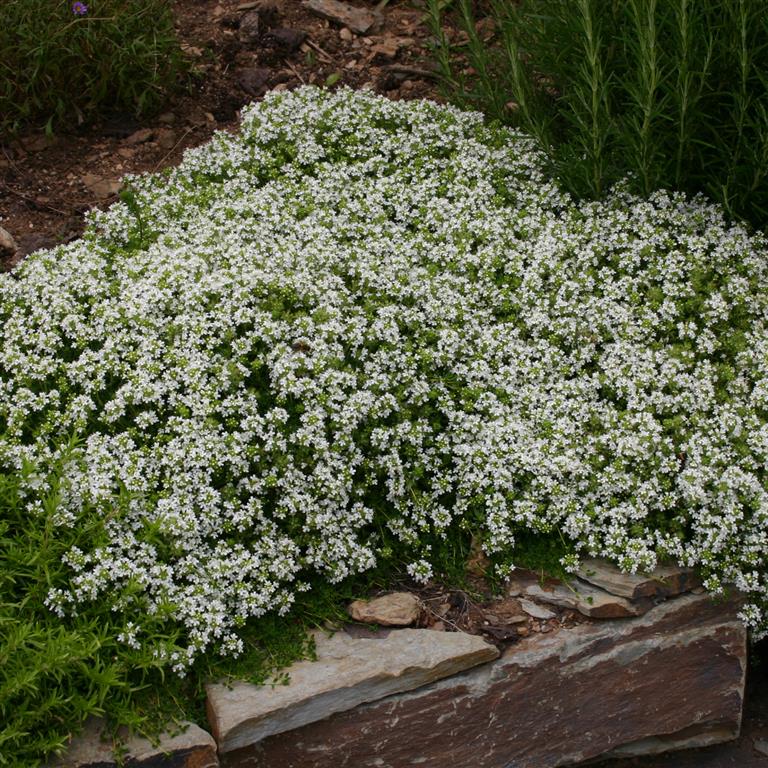
Creeping Thyme White Plants for Spaces
Most other thyme, including wild thyme, have white to bright pink flowers. Creeping thyme smells wonderful and is a ground cover that spreads through rhizomes growing across the soil surface. This, together with its dense growing habit, out-competes and smother weeds making it a good alternative to a grass lawn, especially when you plant starts.

Thyme White Creeping Kahikatea Farm Certified Organic Nursery and Permaculture Farm
White Creeping Thyme forms a low and dense carpet of tiny, bright green rounded leaves that become smothered in abundant clusters of snow white flowers in summer. The 2 to 3 inch high foliage is aromatic when crushed. Excellent as a groundcover, between stepping stones, and around boulders. Get all the details below!
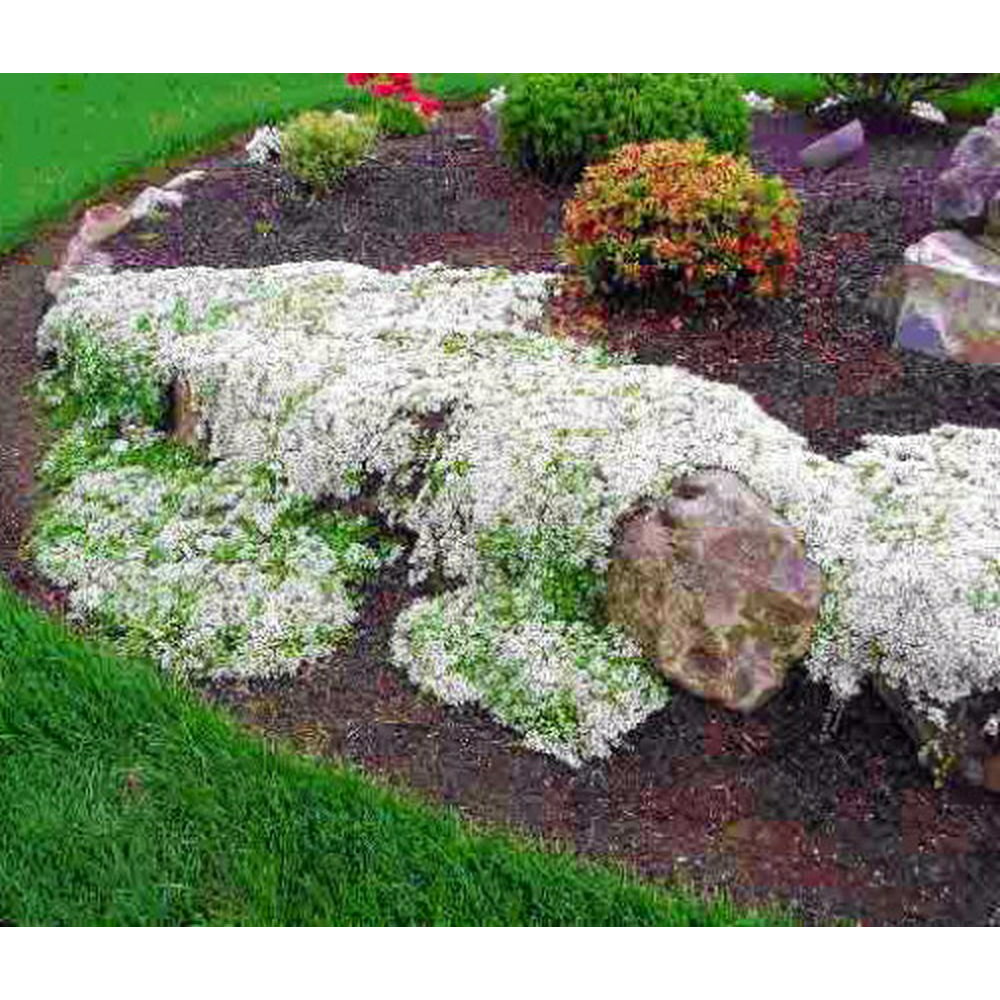
White Creeping Thyme Plant Lightly Scented Live Plant 3" Pot
Select a sunny planting area with well-draining soil. Prep the site by weeding and smoothing out soil clumps. Sow seeds directly, or plant starts. Water seeds daily until germination occurs. Give each plant ample room to grow. Provide regular watering as plants mature, slowly easing up on irrigation.

Organic White Creeping Thyme Plant Mudbrick Herb Cottage
white-flowered creeping thyme A highly attractive, mat-forming, evergreen sub-shrub with small, aromatic, dark green leaves and clusters of white flowers in summer. Perfect for ground cover and areas of paving where light foot traffic will release its scent Synonyms Thymus serpyllum 'Albus' Join the RHS today and save 25% Save to My plants

Buy White Creeping Thyme Plants FREE SHIPPING 5" Size Pot Thymus praecox 'Albiflorus' For
To replace a lawn with thyme, first remove all the grass by stripping off the top layer of grass and soil, then cultivate the ground to ensure it's weed-free. Thyme is shallow rooting so just cultivate the top 15cm or so of ground. The number of thyme plants required depends on the size of plant purchased. Plant plug plants around 10cm apart.
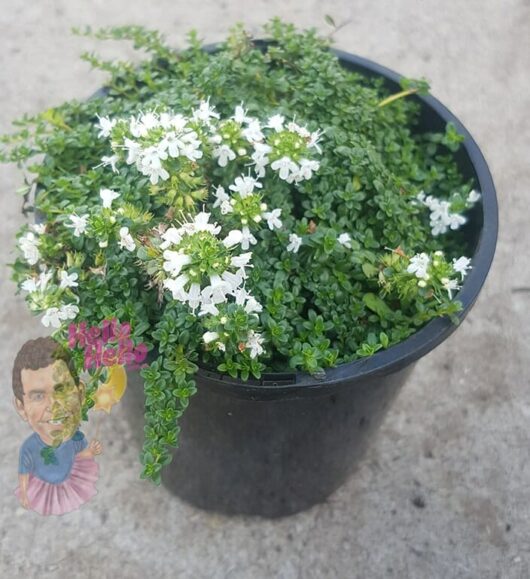
Thymus 'White Creeping Thyme' 6" Pot Hello Hello Plants & Garden Supplies
Caraway thyme (Thymus herba-barona): This varietal is low-growing, with pale pink flowers and the scent of caraway. Creeping thyme (Thymus praecox): True to its name, this variety grows as a low mat, only two to three inches tall, with pink, magenta, lavender, or white flowers. It's often used as a ground cover.

Thyme, White creeping midsummerherbs
Thymes occur in three sub-groups: upright, 12 to 18 inches tall, creeping herbs up to 6 inches, and very flat creepers only 1 to 2 inches in height. Creeping White Thyme falls generally in the second group, although there are also flat-growing cultivars with white blooms.

Thymus s. ‘Albiflorus’ (Creeping Thyme) Cavano's Perennials
Description Creeping thyme is a low-growing, creeping, woody-based perennial.in the Lamiaceae (mint) family native to Greenland, Europe, and Turkey. The origin of the word "thyme" is from the Greek word thumos, which means courage. In the past, thyme was thought to have been an emblem of bravery.

Thymus serpyllum 'Albus', White Creeping Thyme Creeping thyme, Thymus serpyllum, Spice garden
The common name "creeping thyme" can refer to one of several woody-stemmed perennial species of the Thymus genus that are good groundcovers for sunny areas. While not all types are grown as herbs, they are in the mint family and have a pleasant scent; most can be used for cooking. It is closely related to the well-known edible herb.

Thyme, White creeping midsummerherbs
Creeping Thyme Facts. Thymus praecox is a low-growing perennial hardy in USDA hardiness zones 4-9 with fairly minimal requirements. An evergreen with lightly haired foliage, this tiny-growing creeping thyme varietal -- rarely over 3 inches or 7.5 cm. -- will appear in low, dense mats, which sprawl randomly and quickly fill in areas as a ground cover.

White Creeping Thyme (Thymus praecox 'Albiflorus') in the Thymes Database
Creeping thyme is a super easy creeping plant that likes to hang close to the soil with goregous tiny flowers and requires minimal care. It's also known as T. serpyllum, Breckland thyme, breckland wild thyme, elfin thyme, or simply, wild thyme.. This perennial can offer your garden plenty of plant cover with little-to-no care.
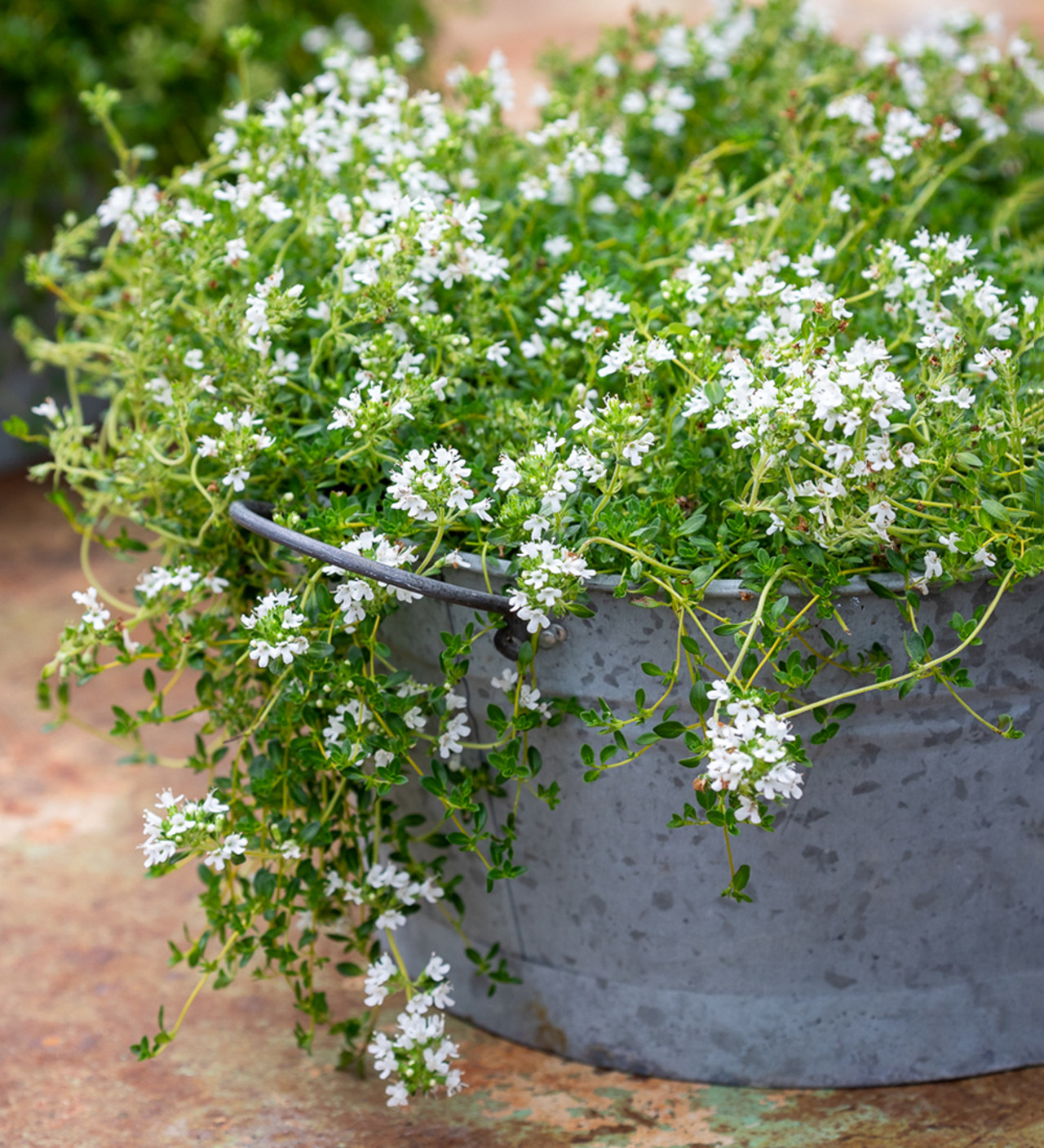
Buy Thyme 'Creeping White' Thyme Plants Sarah Raven
Creeping Thyme Varieties. 1. Red Creeping Thyme. Botanical Name: Thymus serpyllum 'Coccineus'. First on the list of creeping thyme varieties is the red one. It features small rounded shiny green leaves with a herby fragrance. This semi-evergreen plant grows best in full sun. 2. Elfin Creeping Thyme.
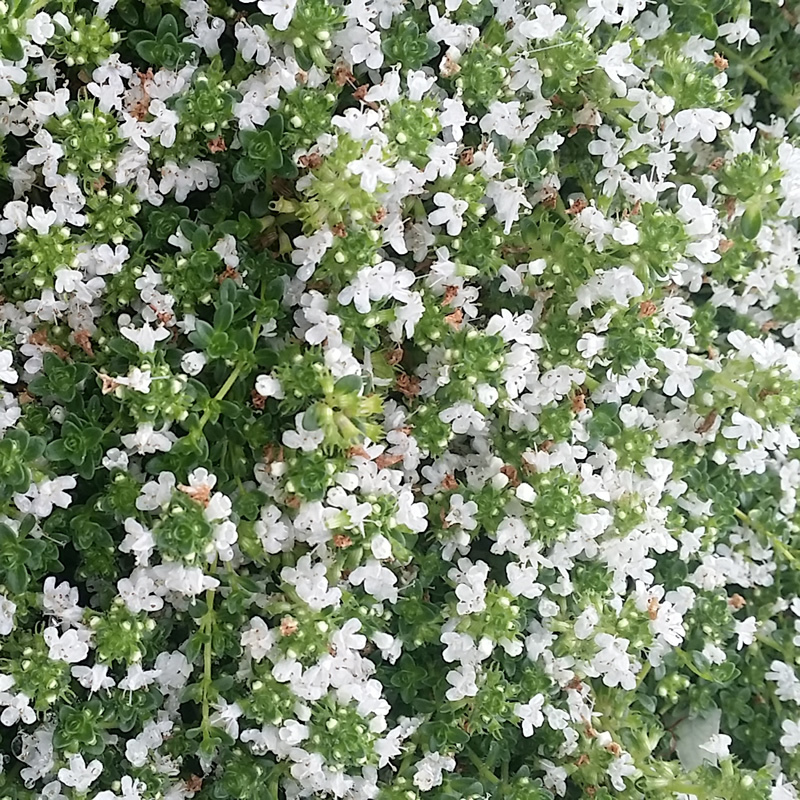
Thymus serpyllum album White Creeping Thyme Perennialle Plants
Thymus serpyllum (Creeping Thyme) Primarily used as a ground cover, Thymus serpyllum (Creeping Thyme) is a dwarf, aromatic shrub forming a low cushion of tiny, pointed, glossy blue-green leaves that turn bronze in the fall. Blooming profusely from early to mid-summer, it features clusters of tiny, deep pink-purplish flowers.

PlantFiles Pictures Creeping Thyme 'Thomas's White' (Thymus polytrichus subsp. britannicus) by
White Moss Thyme, also known as Creeping White Thyme, definitely lights up the area it is in. Its white flowers are about two inches tall and appear like little spikes all over the plant. It can be sheared after blooming or left alone. If left alone, the dead flower spikes will eventually fall off and the thyme continues to spread.
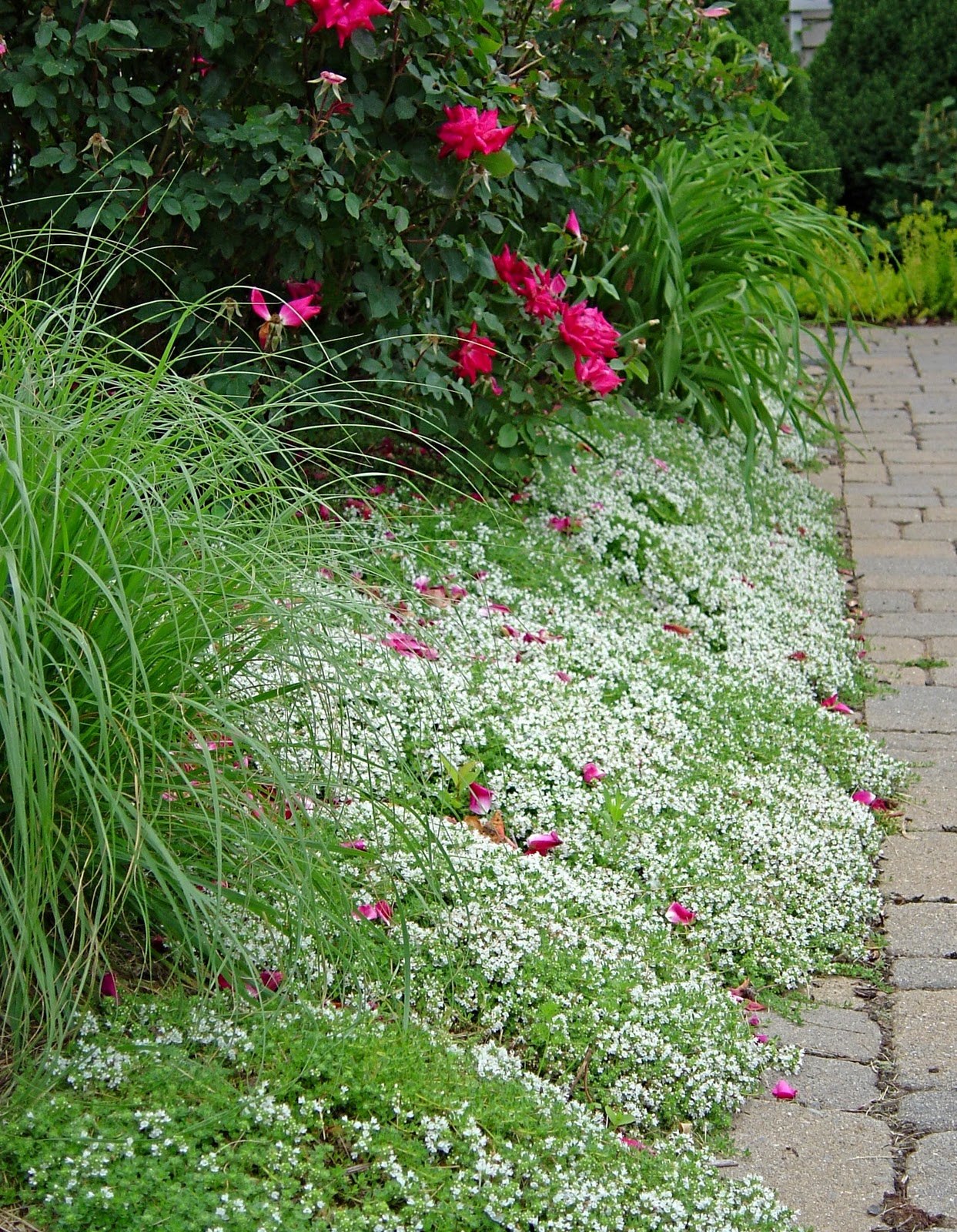
White Creeping Thyme Plant or Thymus Serpyllum Albus Shawna Coronado
Description Wild thyme is a creeping dwarf evergreen shrub with woody stems and a taproot. It forms matlike plants that root from the nodes of the squarish, limp stems. The leaves are in opposite pairs, nearly stalkless, with linear elliptic round-tipped blades and untoothed margins. The plant sends up erect flowering shoots in summer.

PlantFiles Pictures White Creeping Thyme 'Albiflorus' (Thymus praecox) by saya
A close relative of common culinary thyme, creeping thyme ( Thymus serpyllum) is a low-growing, mat-forming, perennial plant that is often grown as a groundcover in sunny areas.